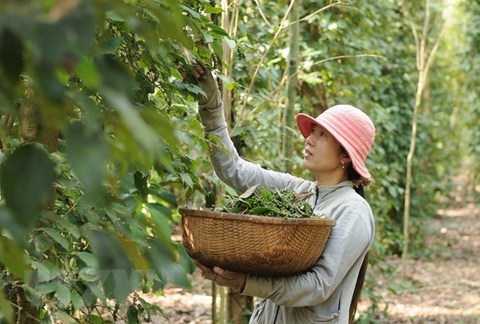Power development program No. 7 goes back up the age
Power development program No. 7 goes back up the age
Experts have found out a lot of problems in the power development program No. 7. The one designed for the socio-economic period from now to 2020

The most noteworthy characteristic of the development program No. 7 approved by the Prime Minister in July 2011 is that Vietnam would rely too much on fossil materials and hydropower plants. If Vietnam follows the development strategy, it would go contrary to the general trend of the times, because fossil materials and hydropower plants would not allow the sustainable development.
Thermopower plants generates too much carbon dioxide
It is expected that by 2020, the power plants in Vietnam would have the total capacity of 75,000 MW, of which hydropower plants would account for 23.1 percent, pumped storage hydropower plants 2.4 percent, coal run plants 48 percent, gas run plants 16.5 percent, recycle energy 5.6 percent, nuclear power 1.3 percent and imports 3.1 percent.
The proportion of coal run thermopower plants in the total power generation system in Vietnam would increase to 51.6 percent by 2030.
Dr Le Minh Duc from the Industrial Policy Institute, an arm of the Ministry of Industry and Trade, has noted that with 48 percent of coal-run thermopower plants by 2020 and 51.6 percent by 2030, Vietnam seems to go contrary to the growing tendency of reducing greenhouse gas emissions which the world is striving for.
According to Duc, coal run power plants generate the highest carbon dioxide emissions, tens times higher than any other types of power generation. In order to make 1 kwh of electricity, coal-run power plants would generate 700gr of carbon dioxide. The figure is 400gr for gas run plants.
Vu Xuan Nguyet Hong, Deputy Head of the Central Institute of Economic Management, said only the low-carbon development would allow Vietnam to maintain its sustainable growth and protect the environment.
Hong has also noted that the development program No. 7 cannot show the solutions to the expansion of clean energy resources and environment protection.
Vietnam has favorable conditions to develop clean and recycled energy which allows it to strive to the sustainable development and make a contribution to the world’s efforts to reduce the greenhouse gas emissions. Therefore, the government needs to clearly stipulate the policies to encourage the investments in the sector.
Hydropower plant unsafe
Under the development program, by 2020, the total capacity of hydropower plants would reach 17,400 MW, making up 23.1 percent of the total 75,000 MW electricity output of the nation.
Developing hydropower plants is believed to be a safe solution in Vietnam, because the plants emit only 10-13 gr of carbon dioxide for every kwh of electricity.
However, scientists say Vietnam needs to learn the lessons from hydropower plants. The projects have led to the loss of the forests, the biodiversity degradation, the loss of land for agricultural production, and the changes of the stream current mechanisms.
A report showed that by 2011, Vietnam had had 34 medium and big hydropower plants in operation with the total designed capacity of 8740 MW which churn out 33 billion kwh of electricity a year. Besides, there are 86 small plants which make out 2 billion kwh.
In general, hydropower plants bring 40 percent of the total electricity output of the nation.
Dr Le Minh Duc stressed that when implementing a project, the government needs to consider the expected benefits in a harmonization instead of focusing on economic benefits. Queensland State in Australia, for example, has give up the bauxite project worth 1.5 billion dollars to protect a primeval forest.
vietnamnet
























